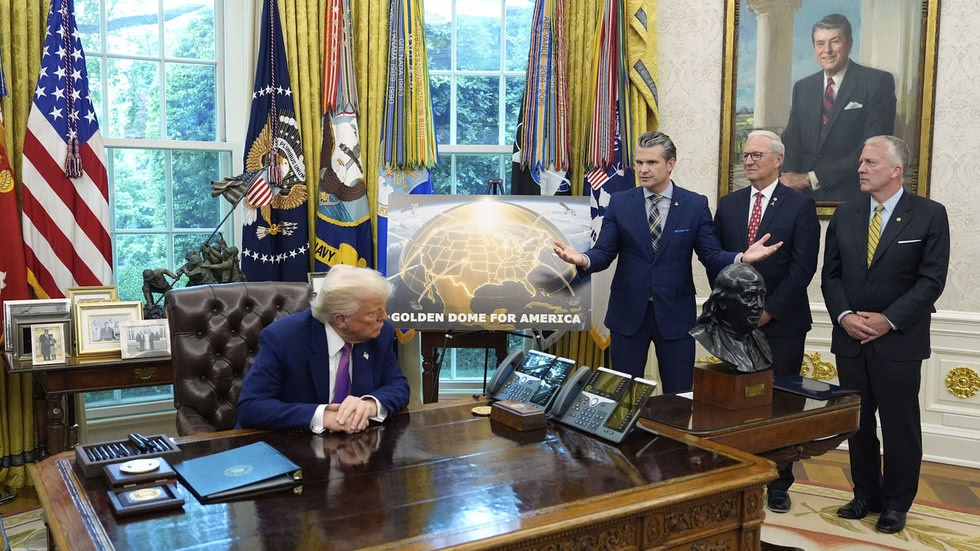In a significant move to bolster national security, US President Donald Trump has unveiled a groundbreaking initiative to deploy a space-based missile defense system, dubbed the “Golden Dome.” This ambitious project aims to create a comprehensive shield capable of intercepting missiles from anywhere in the world, including those launched from space. With an estimated cost of $175 billion, the Golden Dome is slated to become a historic leap forward in American homeland defense.
Speaking from the Oval Office, Trump emphasized the cutting-edge nature of the project, which will integrate existing defense capabilities with next-generation technologies deployed across land, sea, and space. The system will utilize orbital sensors and interceptors to detect and neutralize incoming missiles, regardless of their launch point. Trump expressed confidence in the project’s feasibility, stating that it will be fully operational before the end of his term.
The Golden Dome initiative has evolved from the administration’s earlier “Iron Dome for America” concept, which was renamed earlier this year. Unlike Israel’s Iron Dome, designed to intercept short-range rockets, the US version will counter a broader range of aerial threats, including hypersonic and orbital systems. General Michael Guetlein, Vice Chief of Space Operations at the US Space Force, will lead the effort, which he has described as being “on the magnitude of the Manhattan Project.”
Defense Secretary Pete Hegseth highlighted the significance of recent technological advancements in making comprehensive missile defense more feasible. “The technology wasn’t there. Now it is,” he said, referencing President Ronald Reagan’s abandoned “Star Wars” program from the Cold War era. An initial $25 billion has been earmarked in Trump’s proposed defense budget, with bipartisan support expected on Capitol Hill. However, some lawmakers have raised concerns about long-term costs and technical feasibility, with the Congressional Budget Office estimating the total cost could range from $161 billion to $542 billion over two decades.
Despite skepticism, the administration has framed the Golden Dome as essential to defending the US against evolving missile threats from rivals like Russia and China, as well as rogue actors. A recent Defense Intelligence Agency briefing warned that adversaries are actively developing systems designed to exploit vulnerabilities in American defenses. Russian Foreign Ministry spokeswoman Maria Zakharova criticized the initiative, stating that it is “openly aimed” at undermining the strategic deterrents of Russia and China, and will not contribute to reducing tensions or improving the situation in the strategic sphere.
The Golden Dome initiative marks a significant shift in the US approach to missile defense, with the potential to redefine the country’s security posture in the years to come. As the project moves forward, it will be closely watched by allies and adversaries alike, with its success or failure holding significant implications for global security and the balance of power.

![Anambra’s Onyinyechi Basil wins Miss Universe Nigeria 2025 [VIDEO]](https://mediatalkafrica.com/wp-content/uploads/2025/08/Miss-Universe-Nigeria-2025-Winner-Announced-Onyinyechi-Basil-235x300.jpeg)



